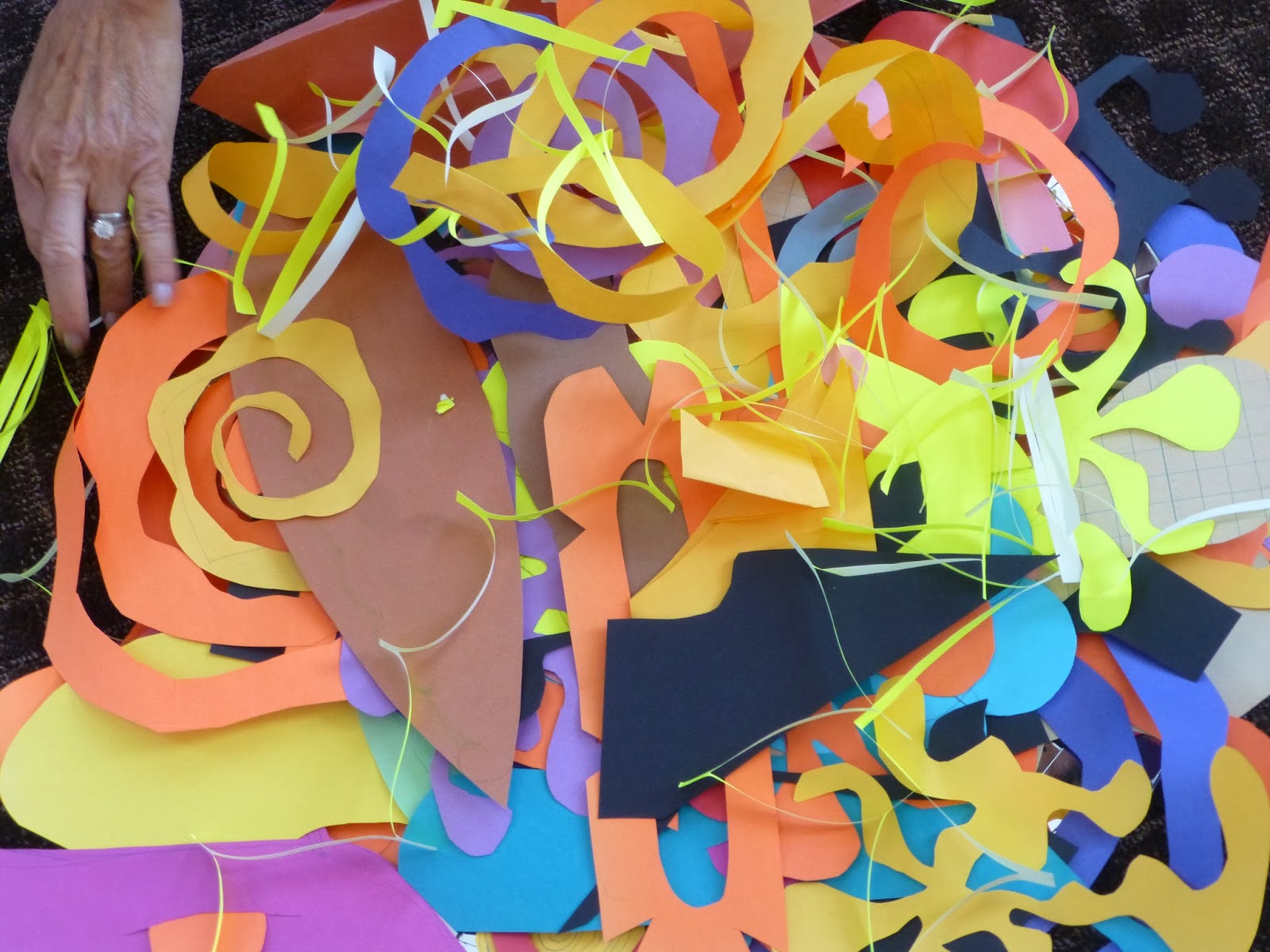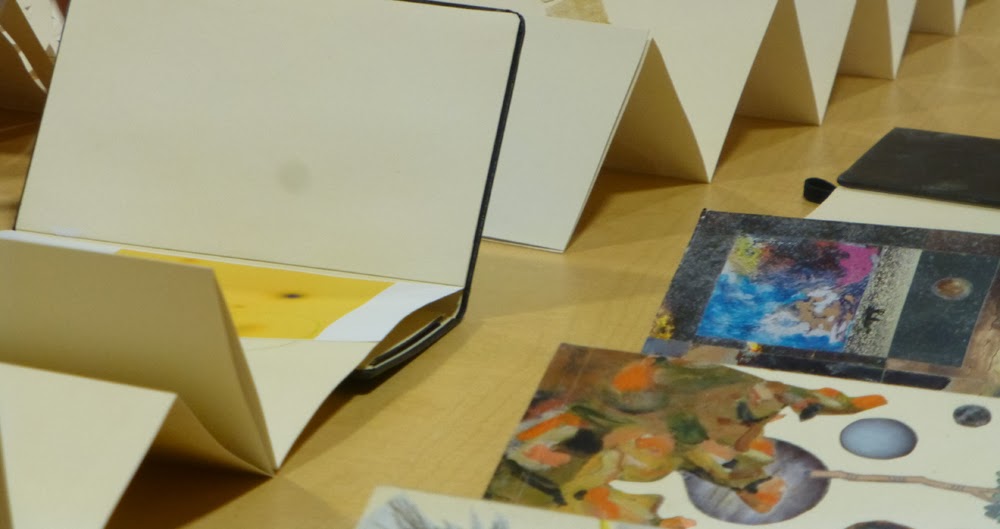 Our recent Artists' Lab began with the question, "Why do people sometimes glow?" That of course led to the often expressed reference to pregnant women glowing. One of our group posited that perhaps that glow is fueled by the addition of the baby's energy. Hmm, glowing for two. Our discussion soon led into auras and chakras.
Our recent Artists' Lab began with the question, "Why do people sometimes glow?" That of course led to the often expressed reference to pregnant women glowing. One of our group posited that perhaps that glow is fueled by the addition of the baby's energy. Hmm, glowing for two. Our discussion soon led into auras and chakras.Rabbi Davis directed us to the text of Exodus 34:29-35 which speaks of Moses' descent from Mt Sinai. This passage talks about how Moses' face became radiant after speaking to God and put forth light. The Midrashim, the sages' interpretive stories on Biblical text, offer several interpretations of this event. One theory was that when Moses took the second set of tablets from God he was only two-hand breadths away and acquired the glow because of this proximity. Yet another theory was that Moses acquired the glow when God taught him Torah. Yet a third theory was that he was born with this shining visage. The light was described as so bright that he lit up a house and one could see from one end of the world to the other.
These rays of light, in Hebrew "keren-or", account for the sculpture of Moses by Michelangelo for in addition to "rays", the word "keren" also means "horn". As a result Moses is often depicted with horns, rather than rays of light as indicated in the text.
The Israelites were initially afraid to approach Moses because of his radiance. When he finished speaking with them he covered his face with a veil or hood. I wondered if this was ever depicted in artwork, but a quick search displayed the familiar bearded visage, occasionally with horns, but no hood or veil. We discussed this separation between the divine and the everyday, a division echoed in the separation of Shabbos from every day. Similarly the Aron Hakodesh, the ark which houses the Torah, is also covered, creating a special moment upon its removal. In the case of Moses it was proposed that he employed the veil so as not to confuse the message with the messenger. He was representing himself as a vessel for God.
We turned our attention to the Zera Kodesh authored by Rabbi Naftali Tzvi Horowitz (1760-1827). We are told we should hold God before us at all times recognizing a divine light surrounding each of us. Horowitz looks to the letter aleph which represents the name of God and notes that it evokes the name of God linked to mankind in a surprising way, it echoes the form of our face. If we break it down to its component parts we see two yuds and a vav, two eyes and a nose, figuratively holding God before us in our own face.
For the arts portion of our session Avi and Robyn led us in the creation of a group mandala. We talked of sacred space and the mandala with its circular form as a meditative vehicle. Each person selected five sheets of colored paper in colors we preferred. We were then charged with cutting out five forms which could be the same or different. Our choice was to be influenced by three questions: 1) what shape or color represents our creative process? 2) what is the inner core, the image that reflects our inner self? and 3) what are the layers, the rings that build us?
My paintings are based on story and often arise out of a process of inquiry. I listen and then create, building imagery on layers of discarded attempts. My result was an ear-like form with open areas exposing the underlying layers. We adjourned to a circular room where a round mirror created the center of the mandala. First a perimeter was formed, then Hebrew letters were placed in the center ring, both the cutout and the negative space created by the cut form. Those with larger shapes placed them first, then we each placed our forms so that they interacted with each other's. Many of the cutouts expressed a meandering shape, reflective of the typical creative process while also hinting at the influence of the recently opened Matisse show.



 Slowly we watched the mandala take shape, forming a beautiful structure that reflected a diverse and creative group. Even as we contemplated this beautiful expression, we knew that the nature of a mandala is transitory.
Slowly we watched the mandala take shape, forming a beautiful structure that reflected a diverse and creative group. Even as we contemplated this beautiful expression, we knew that the nature of a mandala is transitory.
We gathered the pieces together with a plan to shred them and perhaps recycle them to an alternate purpose.
 We closed our session with a sneak preview of the first stage of our
sketchbook project, soon to be sent to our sister labs in
Milwaukee and Madison. Here are just a few of the creations of our multi-talented group.
We closed our session with a sneak preview of the first stage of our
sketchbook project, soon to be sent to our sister labs in
Milwaukee and Madison. Here are just a few of the creations of our multi-talented group.





